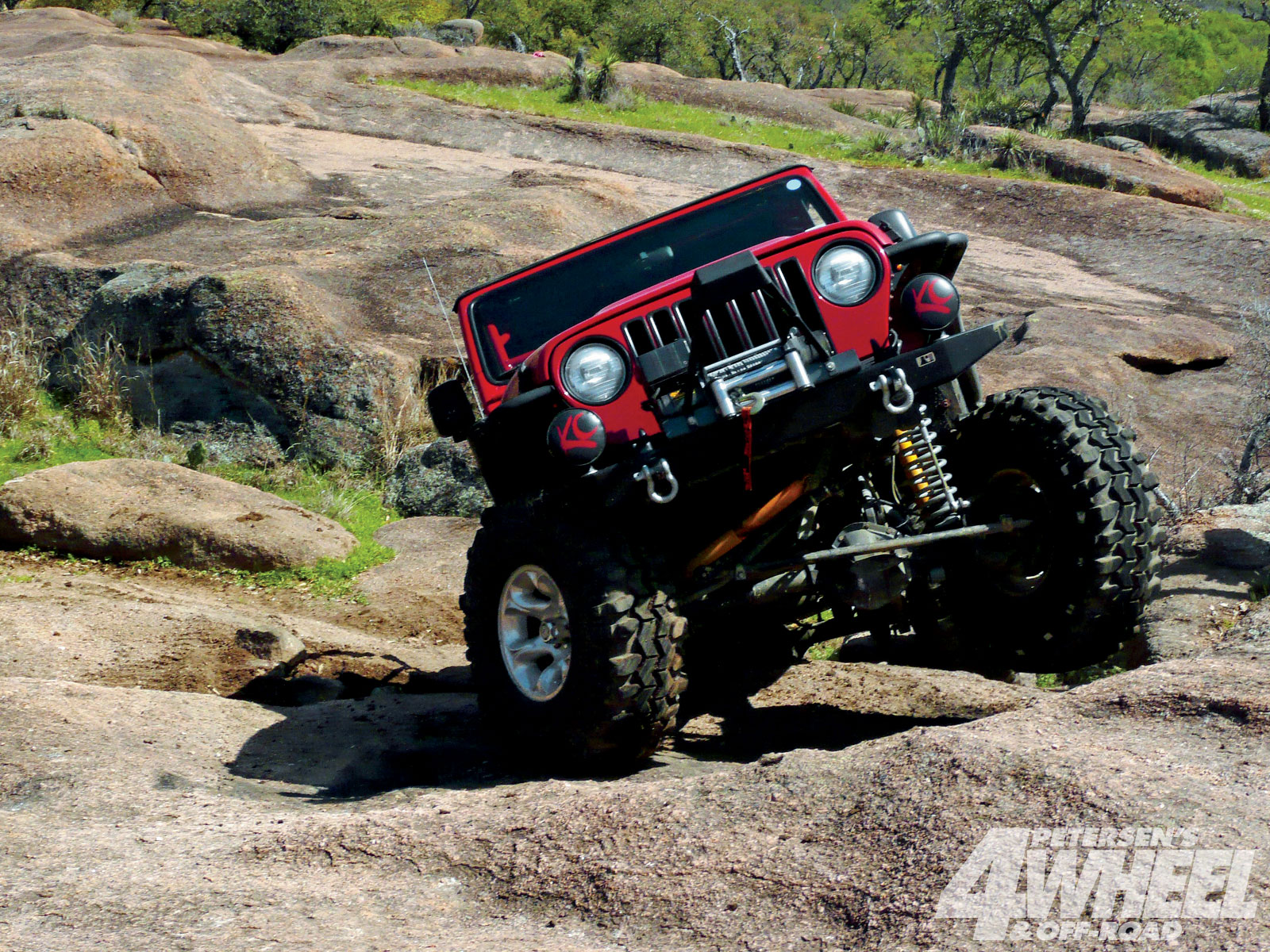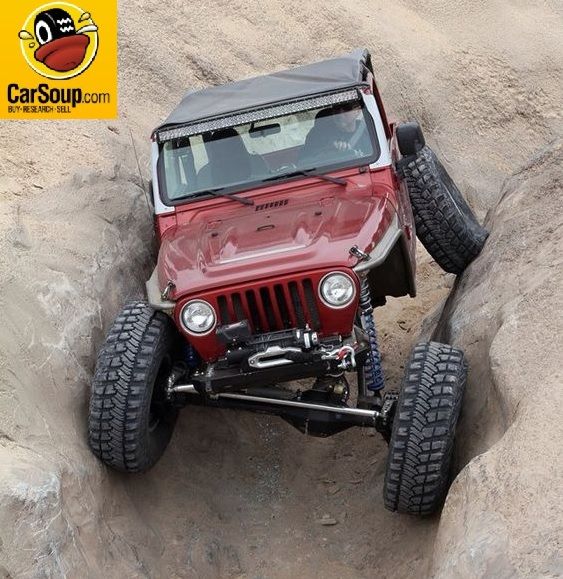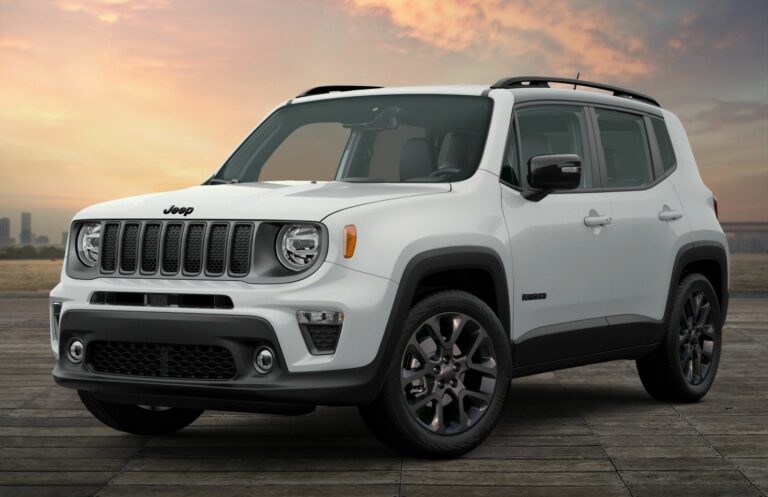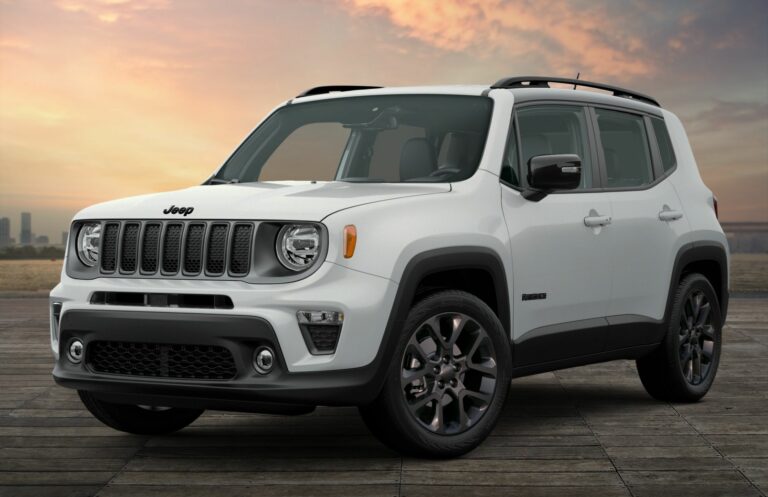Rock Climbing Jeep For Sale: Your Ultimate Guide to Conquering the Off-Road Wilderness
Rock Climbing Jeep For Sale: Your Ultimate Guide to Conquering the Off-Road Wilderness jeeps.truckstrend.com
The roar of an engine, the crunch of tires on jagged rock, the sheer exhilaration of conquering an impossible ascent – this is the world of rock crawling. For many off-road enthusiasts, the ultimate machine for this extreme sport is a specially modified Jeep. More than just a vehicle, a "Rock Climbing Jeep" is a purpose-built beast, engineered to defy gravity and navigate terrain that would humble most other vehicles. It’s a testament to mechanical prowess and human ingenuity, a gateway to untouched wilderness and a vibrant community of adventurers.
This comprehensive guide delves into everything you need to know when considering a "Rock Climbing Jeep For Sale." We’ll explore what makes these Jeeps so unique, the benefits of owning one, critical considerations for prospective buyers, and practical advice to ensure you make an informed decision.
Rock Climbing Jeep For Sale: Your Ultimate Guide to Conquering the Off-Road Wilderness
What Transforms a Jeep into a Rock Climbing Powerhouse?
A stock Jeep, while capable, is a far cry from a true rock-climbing specialist. The transition from factory floor to boulder-conquering machine involves a series of critical, often expensive, modifications designed to enhance articulation, ground clearance, traction, and protection.
Essential Modifications for Rock Crawling:
- Lift Kits and Suspension Systems: This is foundational. A robust lift kit (often 3-6 inches or more) provides the necessary ground clearance to clear obstacles. More importantly, custom long-arm suspension systems, heavy-duty control arms, and high-performance shocks allow for extreme wheel articulation – the ability of the wheels to move independently up and down, keeping all four tires on the ground for maximum traction over uneven terrain.
- Larger Tires and Beadlock Wheels: Massive, aggressive off-road tires (often 35 inches or larger, with deep, open treads) are crucial for grip on slick rock, loose dirt, and mud. Beadlock wheels are a significant upgrade, mechanically clamping the tire bead to the rim. This allows the driver to air down tires to extremely low pressures (5-8 PSI) for an enormous contact patch and superior grip without the risk of the tire coming off the rim.
- Heavy-Duty Axles and Gearing: Stock axles are rarely strong enough to withstand the stresses of large tires and extreme articulation. Upgraded axles (like Dana 44s, Dana 60s, or even custom-built axles) with stronger shafts and reinforced housings are essential. Re-gearing the differentials to a lower ratio (e.g., 4.88, 5.13, 5.38) is critical to compensate for larger tires, restoring power and torque to the wheels, especially for slow-speed crawling.
- Lockers (Locking Differentials): This is perhaps the most vital modification for rock crawling. A standard differential sends power to the wheel with the least resistance. When one wheel lifts off the ground, all power goes to that wheel, and the vehicle stops. Lockers mechanically lock the wheels on an axle together, ensuring both wheels receive equal power, even if one is airborne. This provides continuous forward momentum over challenging obstacles. Selectable lockers (air or electric activated) offer versatility, allowing the driver to engage them only when needed.
- Skid Plates and Armor: Rock crawling is inherently abusive to a vehicle’s undercarriage. Heavy-duty steel or aluminum skid plates protect critical components like the oil pan, transmission, transfer case, fuel tank, and differential housings from impact. Rock sliders, mounted along the rocker panels, prevent body damage when sliding over rocks.
- Winch and Recovery Gear: A high-capacity winch (8,000-12,000 lbs) is non-negotiable. It’s your lifeline when stuck, allowing you to pull yourself out of challenging situations. Complementary recovery gear includes tree savers, snatch blocks, shackles, and recovery straps.
- Reinforced Steering Components: The forces exerted by large tires and extreme terrain can quickly overwhelm stock steering. Upgraded tie rods, drag links, and steering boxes are often necessary for durability and precise control.

These modifications collectively transform a standard Jeep into a formidable rock-climbing machine, capable of tackling trails that few other vehicles can even attempt.

The Undeniable Benefits of Owning a Rock Climbing Jeep
For those drawn to the call of the wild and the challenge of extreme terrain, a rock-climbing Jeep offers a unique set of advantages:
- Unparalleled Off-Road Capability: This is the primary benefit. A properly built rock-crawling Jeep can navigate steep inclines, deep ruts, large boulders, and seemingly impassable obstacles with astonishing grace and power. It opens up a world of trails previously inaccessible.
- Access to Remote Beauty: Many of the most breathtaking natural landscapes, hidden waterfalls, and secluded campsites are only reachable by challenging off-road trails. Your rock-climbing Jeep becomes your key to unlocking these pristine, untouched areas.
- Adrenaline and Adventure: The thrill of navigating a difficult rock garden, the focus required, and the satisfaction of overcoming a formidable obstacle provide an unparalleled rush. It’s a sport that combines mechanical skill, driving precision, and raw courage.
- Durability and Reliability in Extreme Conditions: While heavily modified, quality rock-crawling Jeeps are built to be robust. Their reinforced components are designed to withstand significant abuse, leading to a vehicle that, when properly maintained, is incredibly reliable in the most demanding environments.
- Community and Camaraderie: The off-road and rock-crawling communities are incredibly supportive and passionate. Owning a rock-climbing Jeep opens doors to group trail rides, workshops, events, and a network of like-minded individuals who share your enthusiasm.
- Mechanical Understanding and Self-Reliance: Owning and maintaining a modified Jeep often fosters a deeper understanding of vehicle mechanics. This hands-on experience builds self-reliance, knowing you can troubleshoot and often fix issues on the trail.

Key Considerations When Buying a Rock Climbing Jeep For Sale
Purchasing a rock-climbing Jeep is a significant investment and requires careful consideration. Unlike buying a standard used car, the quality and appropriateness of modifications are paramount.
- Define Your Intended Use and Budget: Are you looking for a dedicated trail rig for extreme rock crawling, or a more versatile vehicle that can handle moderate trails and still be daily driven? Your intended use will dictate the level of modification needed and, consequently, your budget. Heavily modified rigs can range from $20,000 to well over $100,000, depending on the base vehicle and the quality/extent of upgrades.
- Inspect the Frame and Body for Damage: Rock crawling is rough on vehicles. Thoroughly inspect the frame for bends, cracks, or serious rust, especially around suspension mounting points. Check the body for excessive dents, scrapes, or patched areas, which could indicate hard use or poor repairs.
- Evaluate the Quality of Modifications: This is crucial. Were the modifications performed by a reputable shop, or were they a DIY job by an inexperienced owner? Look for clean welds, proper wiring, appropriate hardware, and respected brand-name components. Poorly installed modifications can be dangerous and costly to correct. Ask for receipts and documentation of work performed.
- Assess the Engine and Drivetrain Condition: Even with heavy modifications, the core engine, transmission, and transfer case need to be sound. Check for leaks, unusual noises, or performance issues during a test drive. Inquire about fluid change intervals and any recent maintenance.
- Understand the Axle Gearing and Locker Setup: Ensure the gearing is appropriate for the tire size. Incorrect gearing can lead to sluggish performance and excessive strain on the drivetrain. Confirm the type of lockers (selectable vs. automatic) and test their functionality.
- Review the Suspension System: Examine the shocks, springs, control arms, and bushings for wear or damage. Look for bent components, blown shocks, or cracked bushings. Articulation is key, so ask about the specific components used.
- Check for Street Legality: Heavily modified Jeeps can sometimes run afoul of local vehicle laws regarding ride height, tire width, fender flares, and emissions. Research your state’s regulations before purchasing, especially if you plan to drive it on public roads.
- Get a Pre-Purchase Inspection (PPI): This cannot be stressed enough. Take the Jeep to a reputable off-road shop or a mechanic specializing in Jeeps for a thorough inspection. They can identify potential issues that you might miss, saving you significant money and headaches down the road.
Types and Categories of Rock Climbing Jeeps
While virtually any 4×4 can be modified for off-roading, some Jeep models stand out as prime candidates for rock climbing builds due to their robust chassis, short wheelbases, and extensive aftermarket support:
- Jeep Wrangler (TJ, JK, JL): The undisputed king of the trails.
- TJ (1997-2006): Known for its coil spring suspension (unlike leaf springs in earlier CJs), excellent articulation potential, and affordability. A popular choice for dedicated rock crawlers.
- JK (2007-2018): Introduced more creature comforts, a larger body, and a more modern engine. Offers immense aftermarket support and is very capable when modified. Available in 2-door and 4-door (Unlimited) versions.
- JL (2018-Present): The latest iteration, boasting improved on-road manners, advanced technology, and even greater off-road prowess in Rubicon trim. Modifications are still plentiful but can be more expensive.
- Jeep Cherokee (XJ) (1984-2001): A unibody design, but surprisingly robust and incredibly popular for budget builds. Its light weight and compact size make it agile on tight trails. Aftermarket support is extensive, and many XJs are available at lower price points.
- Jeep CJ Series (CJ-5, CJ-7, CJ-8): The classic, iconic Jeep. Older, simpler designs, often with leaf spring suspension. While they require more extensive custom fabrication for serious rock crawling, their nostalgia factor and robust simplicity appeal to many.
Practical Advice and Actionable Insights for Buyers
- Do Your Homework: Research specific models, common issues, and the reputation of various aftermarket parts brands. Read reviews, watch videos, and join online forums dedicated to rock crawling and Jeep modifications.
- Join Local Off-Road Clubs: Connect with experienced enthusiasts in your area. They can offer invaluable advice, help you evaluate potential purchases, and even recommend reputable shops for inspections or future work.
- Set a Realistic Budget (and Stick to It): Remember that the purchase price is just the beginning. Factor in potential repairs, maintenance, insurance, fuel (heavily modified Jeeps can be thirsty), and future upgrades.
- Prioritize Safety: Ensure all safety equipment is present and functional: seat belts, roll cage (if present), fire extinguisher, and proper recovery points.
- Be Patient: The perfect rock-climbing Jeep for you might not appear overnight. Don’t rush into a purchase. Wait for a vehicle that meets your criteria and passes a thorough inspection.
- Ask for Trail History: Inquire about where the Jeep has been driven and what kind of trails it has tackled. This can give you an idea of how hard it has been used.
Challenges and Solutions in Owning a Rock Climbing Jeep
- High Initial Cost & Ongoing Expense: Quality builds are expensive. Solution: Consider a solid base vehicle and build it up incrementally, or look for a used, well-maintained rig where the previous owner absorbed the initial modification costs. Budget for ongoing maintenance and potential breakage.
- Increased Maintenance & Complexity: Modified vehicles can be more complex to maintain, requiring specialized tools and knowledge. Solution: Learn basic mechanics, find a trusted off-road mechanic, and be diligent with fluid changes and inspections.
- Breakdowns on the Trail: It’s not a matter of if, but when. Solution: Always carry essential spare parts, tools, and recovery gear. Never wheel alone – go with a group or at least one other capable vehicle. Learn basic trailside repairs.
- Street Legality & Daily Driving: Heavily modified Jeeps can be uncomfortable, noisy, and challenging to drive daily, and may not be street legal in all areas. Solution: If daily driving is a must, opt for a less extreme build or consider trailering your Jeep to the trailhead. Research local laws thoroughly.
- Steep Learning Curve: Rock crawling requires skill and experience. Solution: Start on easier trails, go with experienced spotters, and consider attending off-road driving courses. Practice makes perfect.
Estimated Price Table: Rock Climbing Jeep For Sale
Please note: Prices are highly variable and depend on the specific year, mileage, condition of the base vehicle, quality and extent of modifications, and geographic location. This table provides estimated ranges for well-built rock-climbing Jeeps.
| Jeep Model (Year Range) | Typical Condition/Mod Level | Estimated Price Range (USD) | Key Features/Considerations |
|---|





